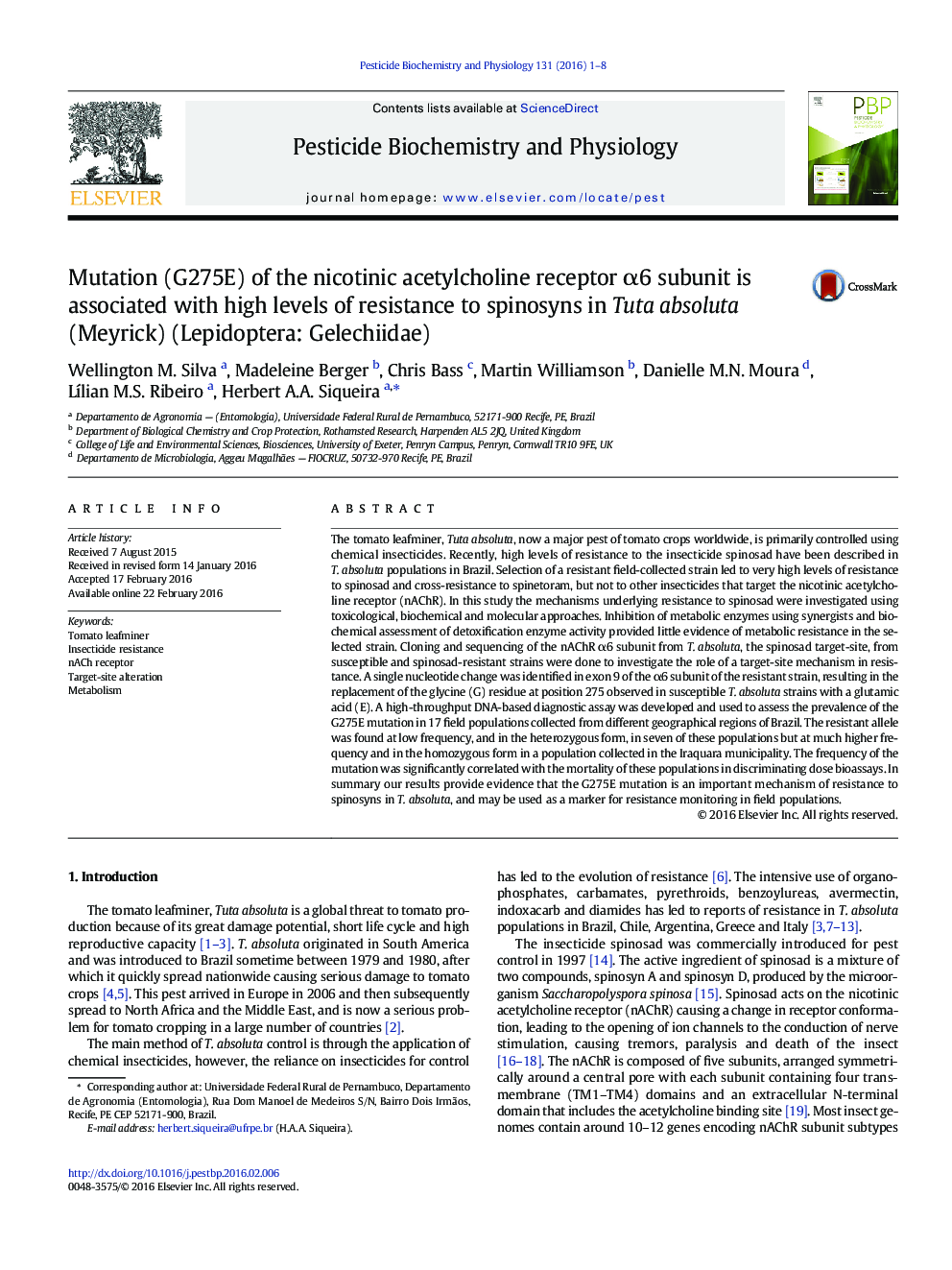| کد مقاله | کد نشریه | سال انتشار | مقاله انگلیسی | نسخه تمام متن |
|---|---|---|---|---|
| 2008950 | 1541768 | 2016 | 8 صفحه PDF | دانلود رایگان |

• Selection in laboratory of field T. absoluta population led to very high resistance to spinosad.
• Metabolism plays a minor role in resistance of T. absoluta to spinosad.
• The G275E mutation in the Taα6 confers high level of resistance to spinosad in T. absoluta.
• The target-site alteration in Taα6 highly correlated with the susceptibility of field T. absoluta populations.
The tomato leafminer, Tuta absoluta, now a major pest of tomato crops worldwide, is primarily controlled using chemical insecticides. Recently, high levels of resistance to the insecticide spinosad have been described in T. absoluta populations in Brazil. Selection of a resistant field-collected strain led to very high levels of resistance to spinosad and cross-resistance to spinetoram, but not to other insecticides that target the nicotinic acetylcholine receptor (nAChR). In this study the mechanisms underlying resistance to spinosad were investigated using toxicological, biochemical and molecular approaches. Inhibition of metabolic enzymes using synergists and biochemical assessment of detoxification enzyme activity provided little evidence of metabolic resistance in the selected strain. Cloning and sequencing of the nAChR α6 subunit from T. absoluta, the spinosad target-site, from susceptible and spinosad-resistant strains were done to investigate the role of a target-site mechanism in resistance. A single nucleotide change was identified in exon 9 of the α6 subunit of the resistant strain, resulting in the replacement of the glycine (G) residue at position 275 observed in susceptible T. absoluta strains with a glutamic acid (E). A high-throughput DNA-based diagnostic assay was developed and used to assess the prevalence of the G275E mutation in 17 field populations collected from different geographical regions of Brazil. The resistant allele was found at low frequency, and in the heterozygous form, in seven of these populations but at much higher frequency and in the homozygous form in a population collected in the Iraquara municipality. The frequency of the mutation was significantly correlated with the mortality of these populations in discriminating dose bioassays. In summary our results provide evidence that the G275E mutation is an important mechanism of resistance to spinosyns in T. absoluta, and may be used as a marker for resistance monitoring in field populations.
Figure optionsDownload as PowerPoint slide
Journal: Pesticide Biochemistry and Physiology - Volume 131, July 2016, Pages 1–8